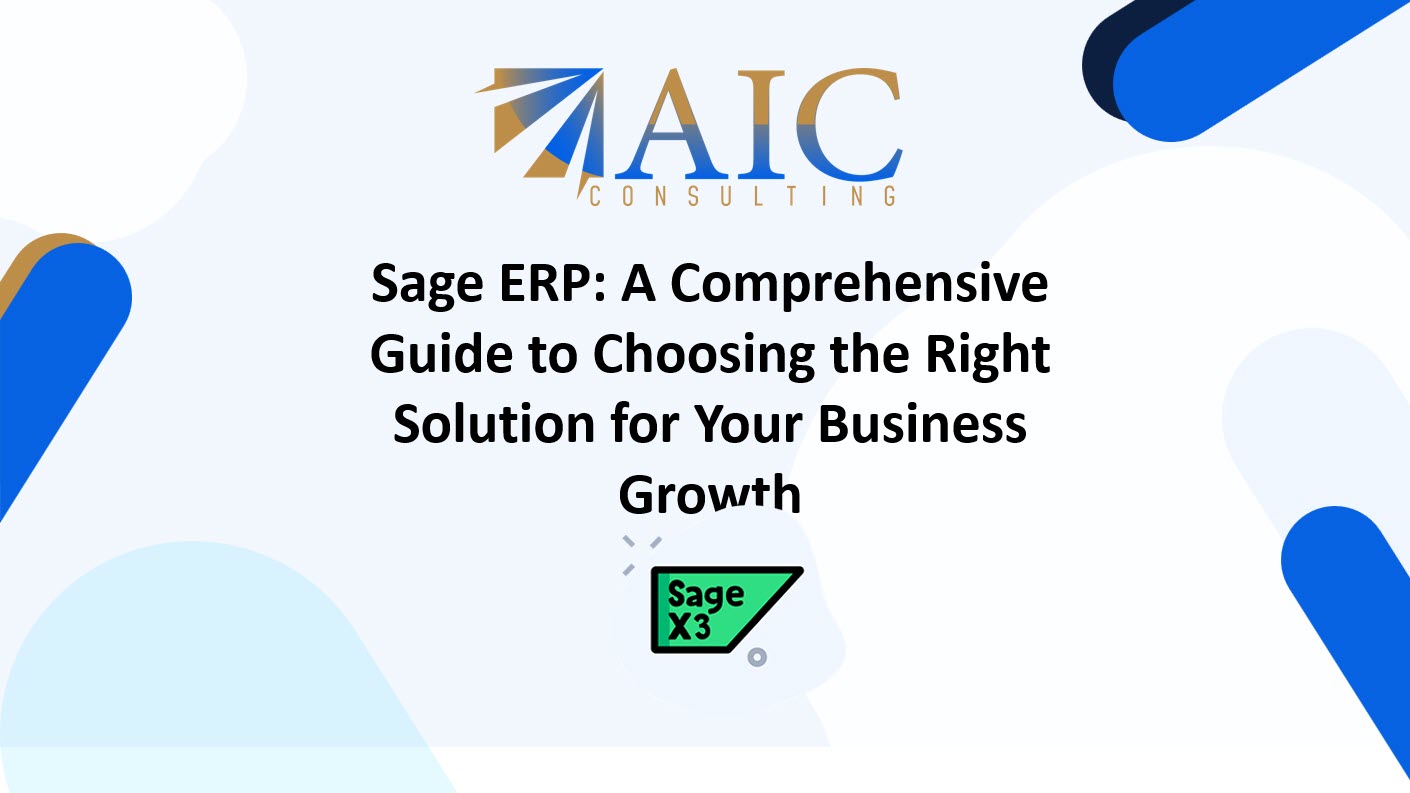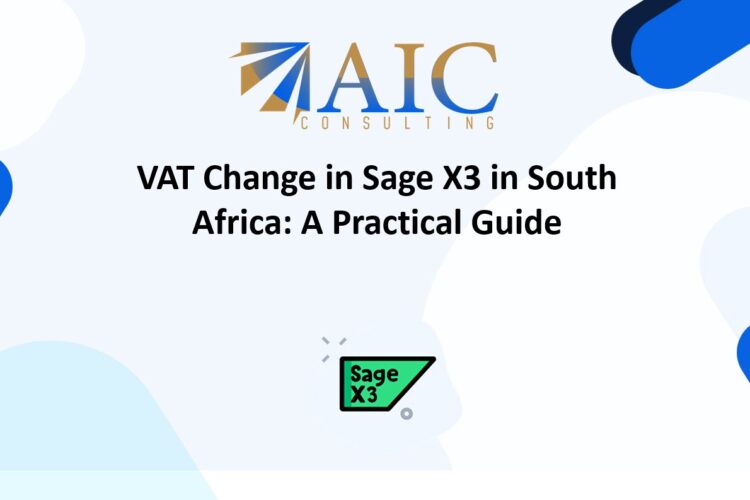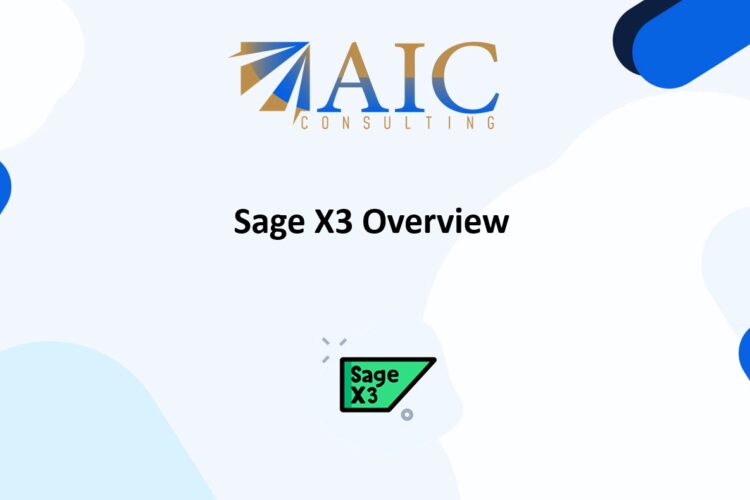
Sage ERP: A Full Guide to Choosing the Right Solution for Your Business Growth
In today’s dynamic business landscape, an Enterprise Resource Planning (ERP) system is more than just a tool—it’s the backbone of efficient operations, strategic decision-making, and sustainable growth. Sage, a long-standing leader in business software, offers a rich ecosystem of ERP and payroll solutions, catering to a vast spectrum of business needs across various sizes and industries. With a global presence and a wealth of experience, Sage has demonstrated a deep commitment to meeting the evolving challenges faced by businesses worldwide.
The sheer breadth of Sage’s portfolio, while offering numerous options, can make the selection process complex. Businesses seeking to implement or upgrade their systems need clarity and detailed information to make the right choice. This blog post aims to provide that clarity. We’ll explore Sage’s key ERP offerings in depth, providing a balanced view of each solution’s strengths and weaknesses. While we will highlight the robust capabilities of Sage X3, particularly for mid-sized to large organizations, our goal is to empower you with the knowledge to determine the best fit for your unique requirements.
Navigating the Sage ERP Ecosystem
Sage’s ERP solutions are designed to address diverse business functions and operational scales. Here’s an overview of the primary offerings:
- Sage X3: A comprehensive ERP system tailored for financial management, manufacturing and distribution (stock), fixed assets emphasizing scalability and customization for complex operations.
- Sage Intacct: A cloud-native financial management solution focused on financials
- Sage 300: A robust business management solution designed to support the growth and profitability of small to medium-sized organizations with intricate financial needs.
- Sage 100: A versatile ERP solution primarily aimed at small to mid-sized businesses, offering a blend of core accounting and industry-specific modules.
- Sage Business Cloud Accounting: An accessible online accounting solution focused on meeting the fundamental financial management requirements of small businesses.
Each solution is crafted to serve specific purposes. To help you navigate this ecosystem effectively, let’s examine the details of each offering, examining its pros, cons, and ideal use cases.
Sage X3: A Deep Dive into Comprehensive ERP Capabilities
Sage X3 distinguishes itself as a powerful, enterprise-grade ERP solution, particularly well-suited for mid-sized to large businesses operating in the financial, manufacturing and distribution sectors. Its core strength lies in its ability to adapt and scale and its powerful ACCOUNTING capabilities, making it a versatile choice for organizations with complex operational needs and growth ambitions.
Why Sage X3 Stands Out
- Scalability and Customization: Sage X3 is engineered to grow with your business. It effortlessly handles increasing transaction volumes, expanding user bases, and multi-national operations. Its high degree of customizability allows businesses to tailor the system to their precise workflows and industry-specific requirements.
- Industry-Specific Focus: Sage X3 provides a rich array of industry-specific functionalities designed to address the unique challenges of sectors. This focus ensures that businesses have access to tools directly relevant to their operations.
- Real-Time Visibility and Control: The system offers comprehensive, real-time visibility across all facets of the business. This empowers organizations to manage complex operations, transactions, and relationships within a unified platform. Role-based dashboards deliver immediate, relevant insights to users, enhancing decision-making.
- Global Capabilities: For businesses with international operations, Sage X3 provides robust multi-country,multi-company, multi-branch and multi-legislation support. It handles multiple languages and currencies while ensuring adherence to international regulatory standards.
- Enhanced Efficiency and Automation: Sage X3 streamlines business processes through visual workflows and automation. By automating repetitive tasks and eliminating operational bottlenecks, it frees up resources and improves overall efficiency.
- Seamless Integration: Sage X3’s strong integration capabilities enable it to connect with a wide range of other business systems, such as CRM and e-commerce platforms. This creates a cohesive and comprehensive view of business operations.
Is Sage X3 the Right Choice for You?
Sage X3 is particularly well-suited for organizations that:
- Require a highly scalable and configurable ERP solution to support growth with strong accounting.
- Operate in financial, manufacturing, distribution, or related industries with complex needs.
- Need extensive customization capabilities to align with specific processes.
- Have international operations or plan to expand globally.
- Prioritize real-time visibility, control, and efficiency.
- Multi Company
While Sage X3 offers a compelling suite of features, it’s essential to consider your organization’s specific needs and compare it with other Sage solutions. To learn more about the Sage X3 system functionality, view the Sage X3 overview blog.
Exploring Other Sage ERP Solutions: A Detailed Comparison
To provide a well-rounded perspective, let’s examine the other key ERP solutions in Sage’s portfolio, outlining their strengths, weaknesses, and ideal applications.
Sage Intacct
- Overview: Sage Intacct is a cloud-based financial management system that stands out for its robust accounting capabilities. It’s designed for growing companies, SMBs, and Medium organizations seeking a scalable solution for their financial needs.
- Advantages:
- Cloud-based architecture for accessibility and reduced IT costs.
- Automatic updates ensure access to the latest features.
- Advanced financial management, including multi-entity and multi-currency support.
- Powerful reporting and dashboarding tools for real-time insights.
- Strong integration capabilities
- Highly scalable for growing businesses.
- Disadvantages:
- It can be more expensive than basic accounting solutions.
- Subscription costs can escalate.
- Primarily focused on financial management, lacking broader ERP functionality.
- May require third-party integrations for other business functions.
- May not be suitable for all business types.
- Ideal for:
- Businesses prioritizing strong financial management.
- Service-based industries and non-profits.
- Organizations seeking a cloud-first accounting solution.
Sage 100
- Overview: Sage 100 is an ERP solution primarily aimed at small to mid-sized businesses. It offers a combination of core accounting functionalities and specialized modules for distribution and manufacturing.
- Advantages:
- Strong core accounting functionality.
- Cloud-connected ecosystem for data sharing.
- Highly customizable with extensive integration options.
- Industry-specific modules for manufacturing and distribution.
- Automation capabilities for routine tasks.
- Integrated payroll module.
- Business intelligence and reporting tools.
- Scalable and flexible deployment options.
- Disadvantages:
- Limited reporting flexibility.
- Lacks native multi-entity support.
- Cumbersome and costly update process.
- Outdated user interface.
- High total cost of ownership.
- Integration challenges and software bugs.
- Complex for new users, requiring training.
- Ideal for:
- Small businesses.
Sage 300
- Overview: Sage 300 is a business management solution designed for small to medium-sized organizations with complex financial structures. It offers features for finance, accounting, inventory, and operations management.
- Advantages:
- Robust financial management with multi-currency
- Effective inventory control.
- Flexible deployment options.
- Customizable reporting and business intelligence.
- Integration with third-party applications.
- Scalable and strong automation of finances.
- Disadvantages:
- Outdated user interface.
- Performance issues with large datasets.
- Limited reporting flexibility.
- May require add-ons for industry-specific needs.
- Integration challenges.
- Ideal for:
- Small to medium-sized organizations.
- Businesses with complex financial structures.
- Companies needing strong financial and inventory management.
Sage Business Cloud Accounting
- Overview: Sage Business Cloud Accounting is an online accounting solution designed to meet the fundamental financial management needs of small businesses.
- Advantages:
- Easy to use and accessible.
- Comprehensive features for small businesses.
- Tax compliance features.
- Cash flow visibility.
- Payroll integration in some plans.
- Strong security.
- Expert customer support.
- Scalable plans.
- Disadvantages:
- Lacks functionality
- Ideal for:
- Small businesses with basic accounting needs.
- Sole traders and freelancers.
- Businesses seeking an easy-to-use cloud-based accounting solution.
Making an Informed Decision: Which Sage Solution is Right for You?
Choosing the right ERP system is a pivotal decision that will shape your business operations and influence your ability to achieve strategic objectives. By carefully considering your organization’s unique requirements and aligning them with the strengths of each Sage solution, you can make an informed choice that sets your business up for success.
Key Factors to Consider:
- Business Size and Complexity: Evaluate your current size and anticipated growth. Consider the complexity of your operations, including transaction volumes, number of users, and the need for multi-entity or multi-national capabilities.
- Industry-Specific Needs: Determine if your industry has unique requirements that necessitate specialized functionalities. Some Sage solutions offer industry-specific modules or features tailored to particular sectors.
- Functional Requirements: Identify the core functionalities you need from an ERP system. Do you prioritize financial management, inventory control, supply chain management, manufacturing, or a combination of these?
- Deployment Preferences: Consider whether you prefer a cloud-based solution for accessibility and scalability or an on-premise solution for greater control. Some Sage solutions offer both options, while others are primarily cloud-based.
- Budget and Total Cost of Ownership: Assess your budget and consider the total cost of ownership, including implementation, customization
As a registered Sage X3 business partner, we have the expertise and experience to help you implement and customize Sage X3 to meet your specific business needs. Contact us today to learn more about how Sage X3 can transform your business.


